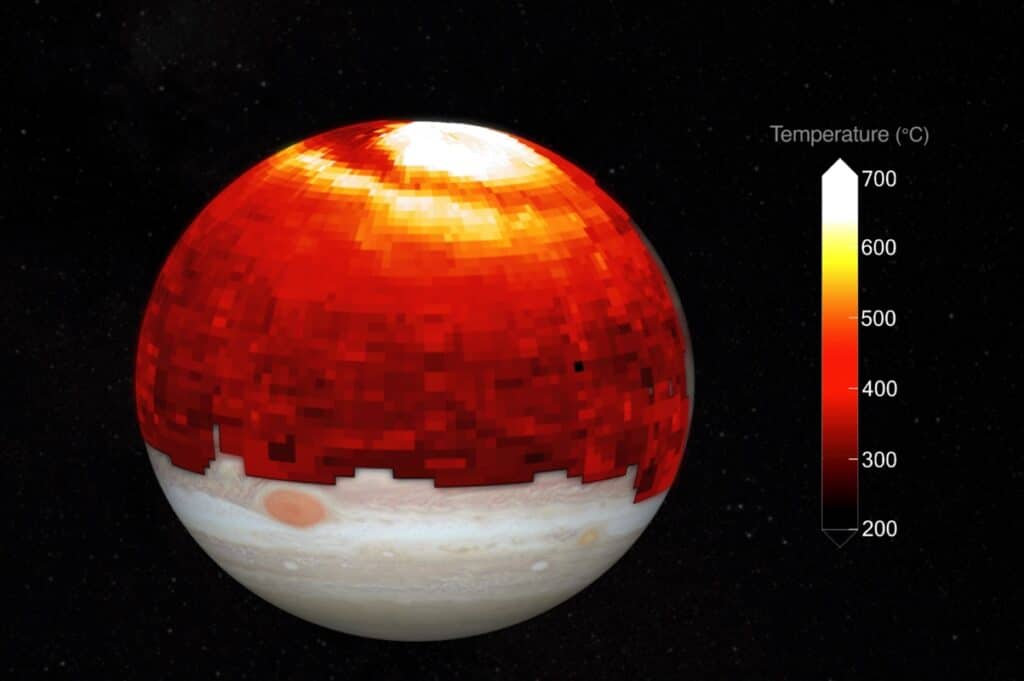
Astronomers have named the cause of abnormal heat in the atmosphere of Jupiter
(ORDO NEWS) — Despite the dim Sun, Jupiter’s atmosphere heats up to hundreds of degrees thanks to the persistent auroras. Heatwaves quickly carry heat further towards the equator.
Looking at Jupiter, we see its powerful thick atmosphere filled with the whirlwinds of colossal hurricanes. The planet is quite far from the Sun and receives less than four percent of the radiation that comes at a distance from the Earth.
Based on this, simulations predict that the temperature of the upper layers of the Jovian atmosphere should be around minus 70 degrees Celsius. However, in reality it is much hotter, in some areas - hundreds of degrees above zero.
The reason for this phenomenon was sorted out by scientists from the Japan Space Agency (JAXA), who presented their work at the annual Europlanet Congress (EPSC) held in Spain.
In 2021, speaking at the previous EPSC meeting, James O’Donoghue and his colleagues at JAXA released temperature maps of Jupiter’s upper atmosphere. Even then, the researchers suggested that the source of their anomalous heating could be the auroras.
This is how the complex interactions between the global magnetic field of the planet and the stream of charged particles coming from the Sun manifest themselves. Jupiter’s magnetosphere is much more powerful than Earth’s, so the auroras there are much stronger and never fade away.
Now O’Donahue and co-authors have confirmed the role of auroras in the heating of the gas giant. Having carefully studied the data on the temperature of Jupiter’s upper atmosphere, scientists found that in the immediate vicinity of the aurora, it reaches 700 degrees Celsius, and then the winds carry the hot gases towards the equator.
This process occurs constantly, but in some moments it is sharply enhanced. Due to the particularly violent interactions of the solar plasma with the planet’s magnetosphere, powerful waves of anomalous heat arise in the atmosphere, which rapidly propagate from the poles.
Scientists tracked one of these waves, which moved from the north, reaching speeds of thousands of kilometers per hour and a width of 130,000 kilometers - an order of magnitude greater than the diameter of the Earth.
Thus, the heat generated in the upper atmosphere of Jupiter under the influence of solar plasma heats them up to high temperatures. This heat is rapidly distributed to the equatorial regions, and sometimes the process is further enhanced by abnormal heat waves reaching truly Jupiterian scales.
—
Online:
Contact us: [email protected]
Our Standards, Terms of Use: Standard Terms And Conditions.









